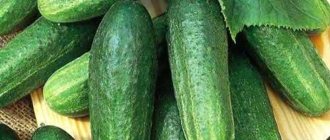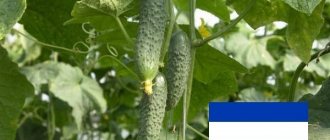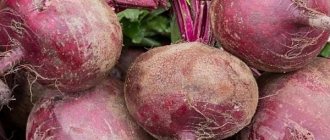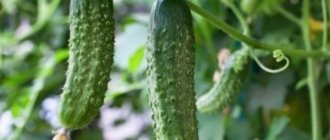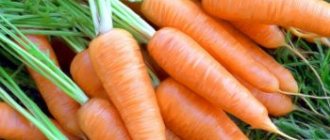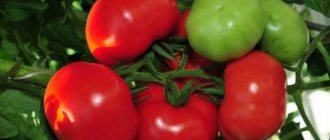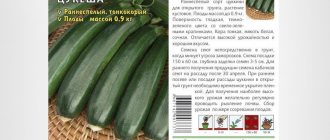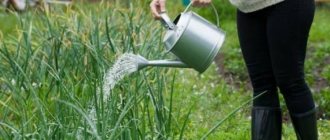What does it look like and photo?
The turnip root is a modified root, it is smooth, fleshy, 4-6 cm in diameter; at the end there is a pod with a long spout. The shape of turnips varies: round, slightly flattened or elongated. Depending on the variety, turnip skin can be: yellow, green, pink, burgundy, purple. The pulp of the fruit is yellow or white - juicy, with a rich taste.
If the top of the root crop protrudes from the soil during growth, it may change color and become brown, purple, or even black. The weight of a mature root can reach 10 kilograms . The stem is tall with feathery green leaves attached to the root.
See clearly what it is and how the vegetable grows in the following photos:
a brief description of
Turnip is one of the most ancient plants in Rus'. It began to be grown as soon as agriculture appeared. However, despite the fact that many consider the vegetable to be originally Russian, it comes from Greece. But there they did not appreciate turnips and equated them with food for slaves. A little later, the vegetable came to Egypt, where they began to present it to the gods, but they carried it on a tin tray (for comparison: beets were presented on a silver tray).
How does it grow and when does it mature?
Turnips can grow as an annual or biennial plant. In the first year after planting, the deciduous part is formed, and in the second year the root crop is formed. By and large, turnips are an unpretentious crop, but they still grow better in light and non-acidic soil. © https://ydoo.info/product/repa.html The sowing depth should not exceed 2 centimeters so that seedlings are uniform and not too late. The culture is also unpretentious in care. Timely loosening of the soil, thinning and watering is sufficient. If desired, you can fertilize during the growing season, but this is not necessary.
If the gardener has set a goal to grow large root crops, then the seeds should not be planted too close to each other. This will allow the turnip to grow normally.
It is very important to understand when turnips are ripe. It all depends on the sowing time. If it was in the spring, then in July you can already harvest. If the seeds were sown in the summer, you can keep the crop in the ground until the first cold weather, and with the onset of frost it can already be taken out. It is not recommended to dig up turnips; it is better to pull them out. If the root vegetables are mature, they will go well without using much force.
How does it bloom?
Few people pay attention to the turnip blossoms. In appearance it is very inconspicuous, to some it resembles an ordinary weed. The stem of the plant is quite tall and corymbose at the beginning of flowering. The flowers themselves are yellow or light beige. The peak of flowering occurs in late spring - early summer, but the timing may vary, as it depends on the time of planting and temperature in a particular region.
What do the fruits look like?
Turnip fruits can look different. Usually it is a small, round, white or beige root vegetable flattened at the top and bottom, with a thin tail at the end (this is the undeveloped part of the root vegetable, that is, the roots). However, there are oblong vegetables of a wide variety of colors: from yellow to light purple.
It is worth noting that round-shaped turnips are considered table turnips and are suitable for food; oblong root vegetables are forage varieties. The latter are not so tasty and are very rarely eaten.
Taste
The taste of turnips is similar to radishes, only the former is much sweeter, as it contains sugar. The consistency of the root vegetable is dense, more similar to carrots. The taste of turnips is more delicate than that of radishes and does not have a pronounced bitter note, although this can also occur if the plant has not been watered well enough or is overripe.
Smell
Raw turnips have a very similar flavor to radishes, but cooked turnips have a mild flavor. Some people find the smell of turnips unpleasant, which is due to the presence of mustard oils in the root crop, which give a slight bitterness in the aroma.
How do you eat turnips?
Turnips are eaten in different forms, and this is perhaps one of the most versatile vegetables. It can be eaten raw (added to salads), baked, boiled (can replace potatoes in soups and borscht), fried, steamed.
In Ancient Rus', turnips were first peeled, then cut into small cubes and placed in clay pots. After this, the root crop was poured with warm water and placed in a hot oven, but without fire, and simmered for two hours. The finished fruits were served to the table with salt and butter.
Botanical description
Turnip (lat. Brassica rapa L.) is a dicotyledonous herbaceous plant, a species of the genus Cabbage (lat. Brassica). This genus is well known for its nutritional, medicinal or fodder properties.
In the first year, the plant produces an edible root crop and a rosette of basal leaves forms on the surface. The leaves of the rosette are long-petiolate and lyre-shaped. The stem reaches a height of 40-50 cm , its yellowish-green leaves are jagged, sessile, oval or slightly drooping.
In the second year of life, tall, branched flowering shoots appear. Turnip inflorescences are collected in corymbs, at the end of flowering they take the shape of a brush. The flowers are yellow or pale yellow. The peduncle, 3-8 cm long, deviates at an acute angle at the end of flowering. The fruits are erect pods with a long spout and small spherical seeds that are burgundy-brown in color.
There are 2 types of turnips: ordinary (garden) and salad (cockaboo) . Salad turnips are divided into leaf and root. Leaf turnip (komatsuna) does not form a root vegetable; the leaves of the plant are eaten.
Reference! Lettuce turnips were developed in Japan by crossing Far Eastern and European turnips about 2 thousand years ago.
The best turnip varieties for the Urals
Turnips tolerate the Ural climate well: frequent frosts and temperature fluctuations, heavy rainfall. For table use, choose early vegetables that quickly produce a harvest. If you need to prepare turnips for the winter, then the best option would be mid-ripening varieties. For planting in the Urals, the seeds of the best varieties of turnips for open ground are selected.
Comet
Comet turnip produces a harvest in the mid-late period: 75 days after the appearance of seedlings. Its leaves are green, slightly curved and wavy at the edges, growing in an erect rosette. Elongated root vegetables are purple in the upper part and white in the lower part. The weight of vegetables ranges from 150 to 250 g. Their tasting score is high. The harvest volume reaches 3.5 kg per 1 sq. m.
Advice! In the Urals, planting work is optimally carried out in mid-to-late May.
White Night
Turnip White Night is another representative of mid-season hybrids. It takes about 2 months from the formation of seedlings to the stage of technical maturity. The root crop is white, up to 12 cm in size, 2/3 immersed in the ground. The vegetables inside are juicy and tender in taste.
For summer consumption, turnips are planted from the end of April to the last days of May. If it is necessary to obtain vegetables for winter storage, then the work is carried out at the end of June. The variety gives a high yield - up to 8 kg per 1 sq. m.
Snow Maiden
Turnip variety Snegurochka ripens early. After the emergence of seedlings, 1.5 - 2 months pass before the vegetables are harvested. The rosette of leaves is slightly spreading. The root vegetables of the variety are spherical, white, with smooth skin. Their average weight is 65 g. The pulp of the vegetable is juicy, with a pleasant delicate taste.
In the conditions of the Urals, the yield of Snegurochka turnips reaches 4 kg per square meter of planting. The plant is valued for its shade tolerance, resistance to flowering, and quality of vegetables.
A chidhood dream
Turnip Children's Dream ripens in the mid-early period. Its root vegetables are yellow in color, spherical in shape, weighing from 150 to 200 g. The skin of the vegetable is smooth, thin, the taste is excellent, and the pulp is rich in vitamins and minerals.
The variety Children's Dream is valued for its marketable appearance, cold resistance, and rapid ripening. Vegetables are used fresh or cooked.
Russian fairy tale
The Russian Fairy Tale variety is ready for consumption in the mid-early period. After seed germination, vegetables ripen in 80 days. The harvest is formed simultaneously. Yellow, thin-skinned root vegetables are spherical in shape. Their pulp has a good taste. The average weight is about 200 g.
Turnip Russian fairy tale has a universal purpose. Vegetables are rich in vitamin C, making them ideal for winter consumption. The harvest can be stored in a cellar or basement without any problems.
Bug
The Zhuchka variety gives harvest in the early period. Vegetables are harvested 50 days after sprouts form. The leaves grow in a semi-erect rosette. The root vegetables are yellow in color, spherical in shape, have juicy pulp and a pleasant, delicate taste. Their average weight is 130 g. Up to 2.5 kg of vegetables are harvested from each square meter.
Komatsuna
Komatsuna is a representative of the leaf turnip. The shoots of the variety are ready to eat a month after the formation of shoots. The leaves of the plant are oval, green, medium in size, slightly wavy at the edges. The rosette is erect, the height of the bush reaches 20 cm. The vegetable has a mass of 150 g. Up to 3.6 kg of harvest is harvested per square meter.
Attention! Komatsuna turnip leaves contain vitamins and other beneficial substances. Greens are used to prevent atherosclerosis, anemia, and strengthen the immune system.
Structure
The type of turnip fruit - a root crop - is not the most characteristic of the Brassica genus, among which the tap root system predominates. The turnip root system penetrates deeply into the soil, the root transforms into a root crop, which is a thickened adventitious root. In the structure of the root crop, the most important role is played by the storage main tissue . Due to the unusual structure of the flower, representatives of the Cabbage family received a second name - Cruciferous.
The flower formula is as follows: P4 L4 T2+4 P1, where:
- Ch4 – four sepals arranged crosswise.
- L4 – four petals, cross to cross.
- T2+4 – two short and four long stamens.
- P1 – one pestle.
Use of turnips in cooking
Gentlemen who are losing weight can put turnips in soup instead of potatoes.
As I wrote above, turnips are not very valued in the modern world. And I know from myself that it is almost impossible to find it on the shelves of markets and shops. However, I will still tell you about what dishes can be prepared from this tasty root vegetable.
Well, what if you are the happy owner of your own piece of land, or you are a talented agronomist who knows how to grow vegetables right on the windowsill of a city apartment, or you live in an area where turnips are still rightfully valued, and therefore grown and sold everywhere!
Be that as it may, I’m sure this information will not be superfluous for you. I personally have not lost hope that this root vegetable will one day become part of my diet, and therefore it is important for me to know what can be prepared from it.
So, turnips, like most other vegetables, are best eaten raw.
This way you will retain all the nutrients it contains, and also taste the unique taste that Mother Nature has endowed it with.
If you are not a big fan of eating vegetables like this, then, of course, salads with turnips will help you out. It goes well with radishes, radishes, all types of cabbage, carrots, cucumbers, tomatoes, raw beets, celery, fresh corn and peas.
Well, of course, the unusual taste of this root vegetable can be complemented by any fresh herbs - parsley, dill, cilantro, green onions, lettuce, basil, mint, arugula, tops, celery leaves. I don't think you forgot anyone?
